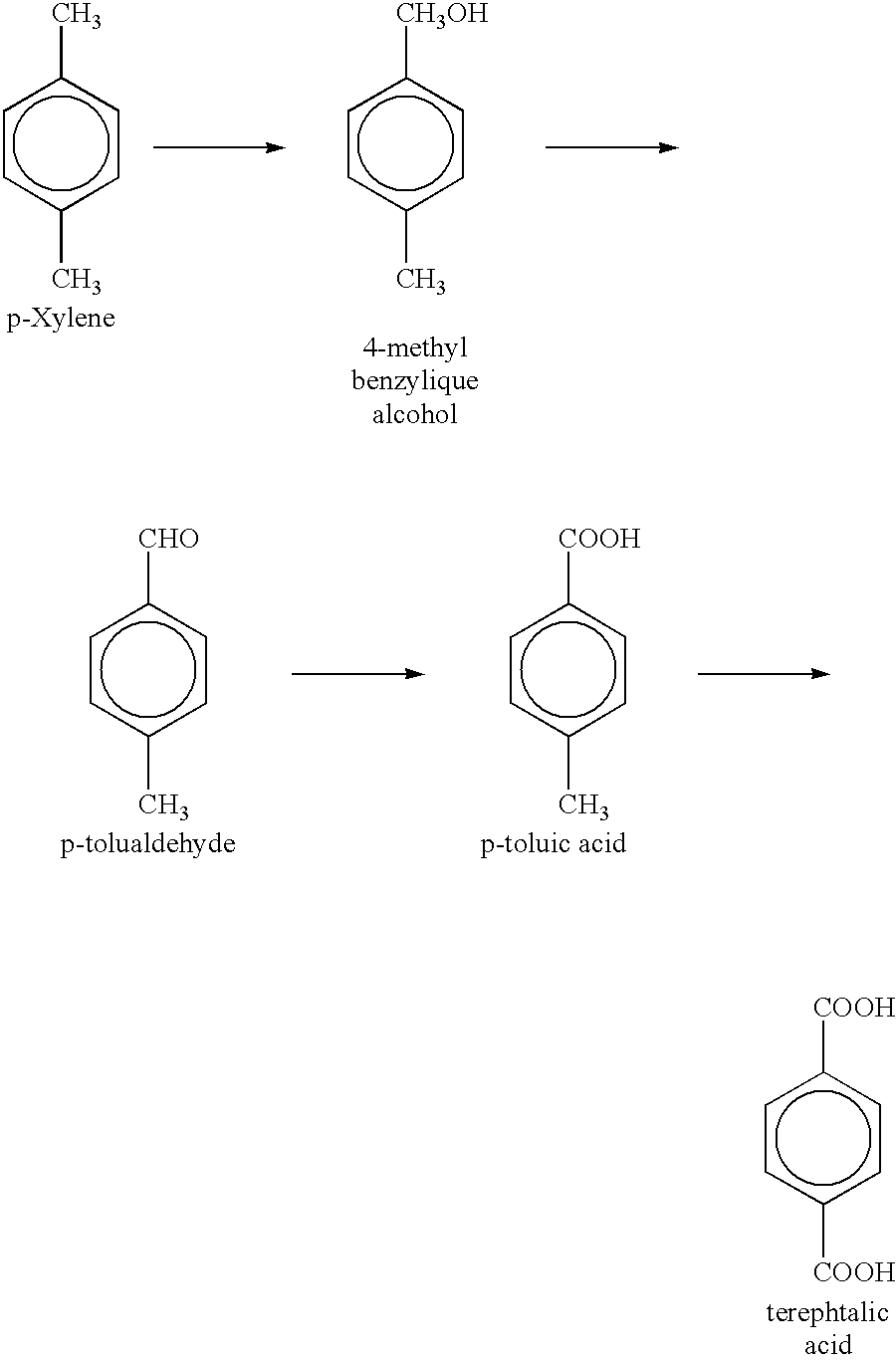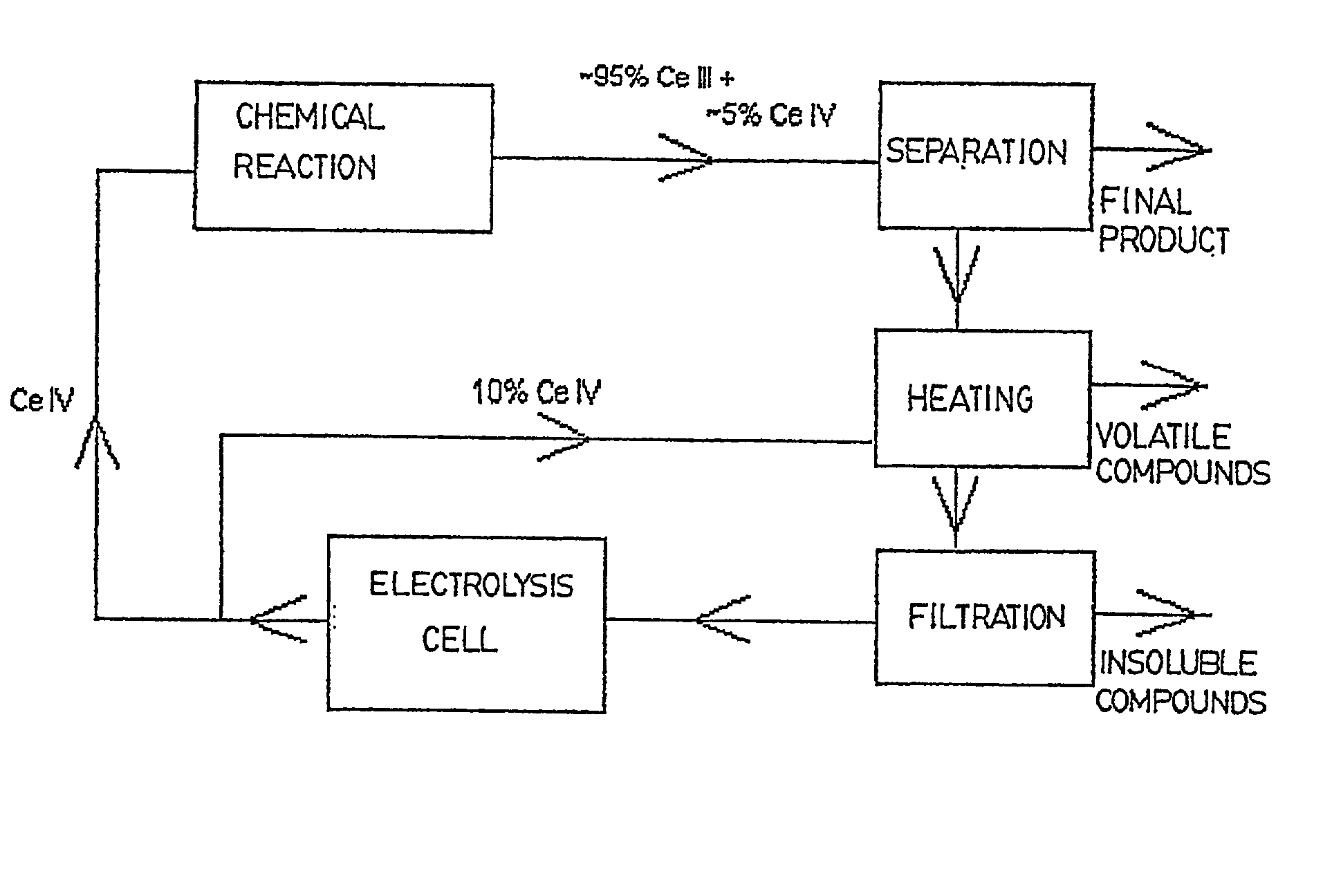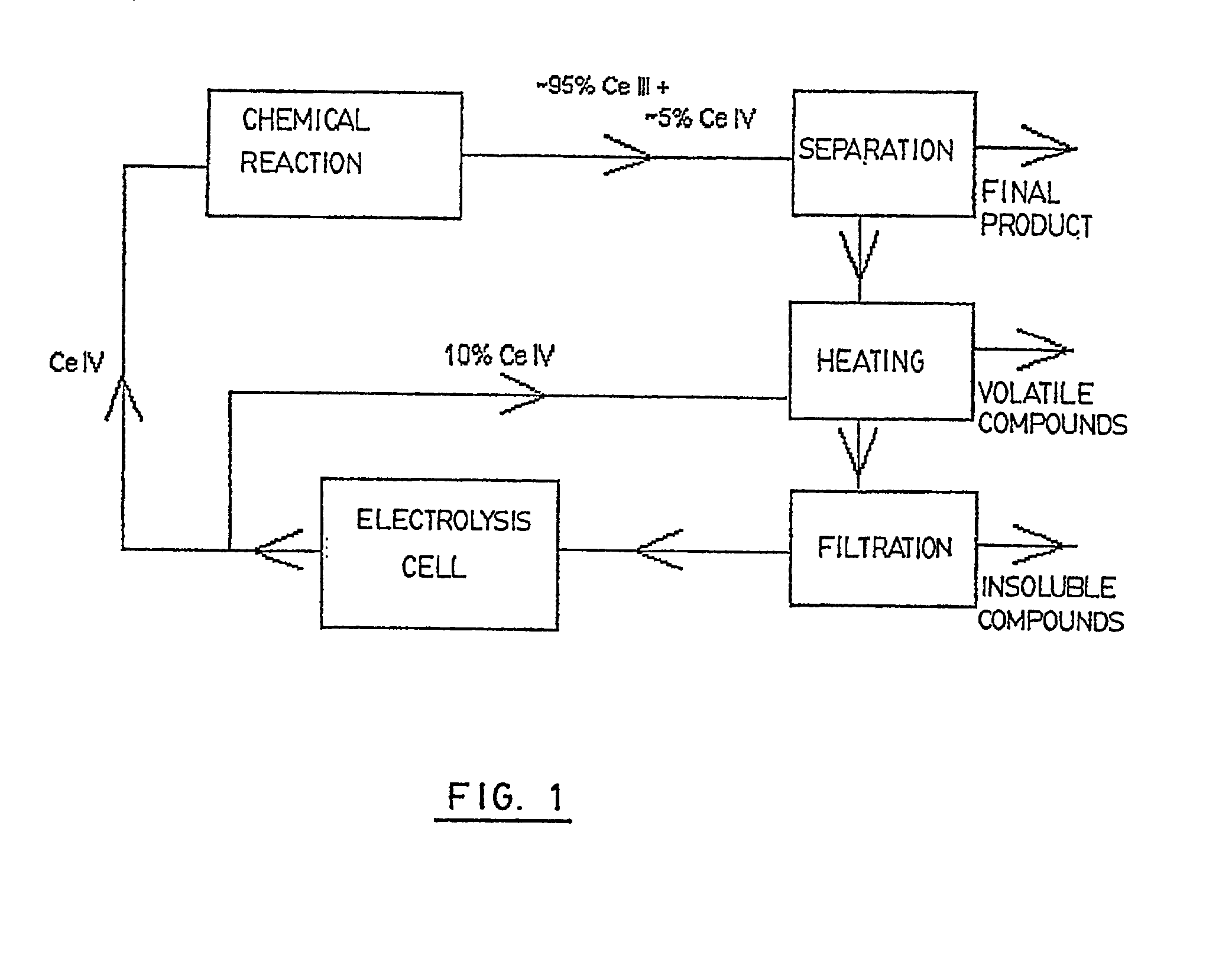Method of purification of a redox mediator before electrolytic regeneration thereof
a redox mediator and electrolytic technology, applied in the field of purification of redox mediators before electrolytic regeneration thereof, can solve the problems of reducing the efficiency of electrolysis current, affecting the regeneration efficiency of catalysts in electrolytic cells, and regenerating electrolytes
- Summary
- Abstract
- Description
- Claims
- Application Information
AI Technical Summary
Benefits of technology
Problems solved by technology
Method used
Image
Examples
example 2
Electrosynthesis of azelaic and pelargonic acids with Cr III / CrVI
[0107] The electrolyte used to mediate the oxidation of oleic acid in order to synthesize pelargonic and azelaic acids is the Redox couple Cr III / Cr VI. A combination of Ce III / Ce IV and Cr III / Cr VI can also be used to mediate the oxidation of oleic acid. However, an electrolyte made up only of cerium will not work.
[0108] Untreated electrolyte (prior art)
[0109] With a >chromium solution used as a reference with no organic matter contained therein, a current efficiency of 78% with 0,22 M of Cr VI was obtained.
[0110] With the same solution after having been used once and not having undergone any treatment other than extraction, filtration and decantation (hereafter called >), the current efficiency dropped tremendously in comparison to the new solution. For the used untreated solution there was a drop in current efficiency of 40% during regeneration of the electrolyte, the efficiency was 48% at 0,20 M of Cr VI.
[0111] Ho...
example 3
Electrolytic regeneration of a Ce IV solution for the electrosynthesis of chlorobenzoguinone
[0136] The electrolyte used to catalyze the oxidation of chloroaniline to chlorobenzoquinone is the Redox couple Ce III / Ce IV.
[0137] This series of experiments was carried out in order to determine which one of the known treatments would be the best one for the purification of the electrolyte before its regeneration in the electrolysis cell. The three treatments selected for the purpose of comparison were the following: an addition of an excess of Ce IV to the electrolyte before regeneration, the use of a more efficient solvent during the extraction step, and an improvement in the filtration step.
[0138] Addition of an excess of Ce IV to the electrolyte before regeneration
[0139] The idea behind using this treatment is to have a current efficiency differential similar to that of a non-used solution at the beginning of the regeneration of the solution in the electrolysis cell.
[0140] 200 ml of a ...
PUM
| Property | Measurement | Unit |
|---|---|---|
| temperature | aaaaa | aaaaa |
| temperature | aaaaa | aaaaa |
| temperature | aaaaa | aaaaa |
Abstract
Description
Claims
Application Information
 Login to View More
Login to View More - R&D
- Intellectual Property
- Life Sciences
- Materials
- Tech Scout
- Unparalleled Data Quality
- Higher Quality Content
- 60% Fewer Hallucinations
Browse by: Latest US Patents, China's latest patents, Technical Efficacy Thesaurus, Application Domain, Technology Topic, Popular Technical Reports.
© 2025 PatSnap. All rights reserved.Legal|Privacy policy|Modern Slavery Act Transparency Statement|Sitemap|About US| Contact US: help@patsnap.com



